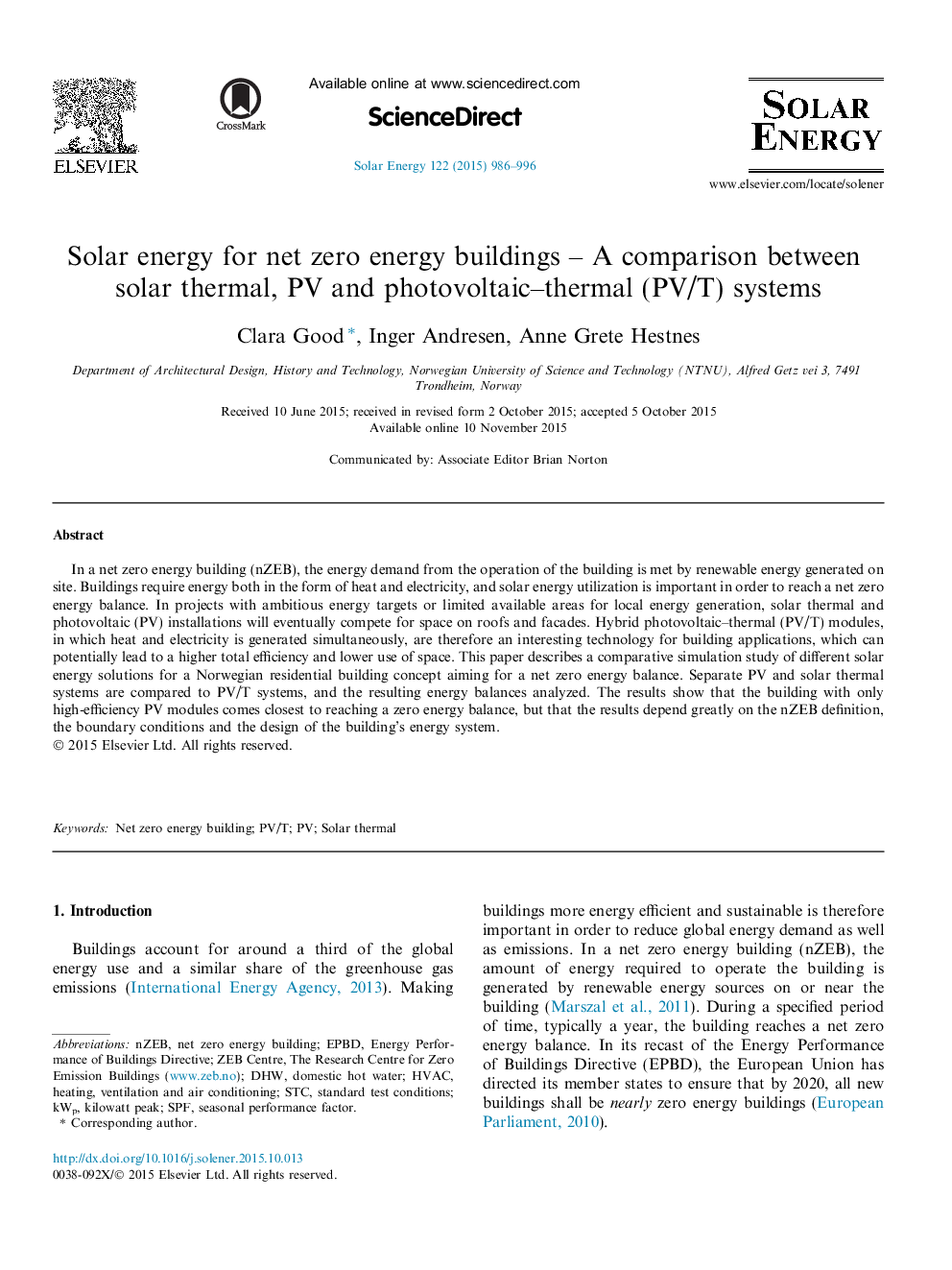| کد مقاله | کد نشریه | سال انتشار | مقاله انگلیسی | نسخه تمام متن |
|---|---|---|---|---|
| 1549642 | 1513096 | 2015 | 11 صفحه PDF | دانلود رایگان |

• A comparative simulation study of solar thermal, PV and PV/T systems was performed.
• The systems were applied to a model of a Norwegian residential passive house.
• Energy performance and import/export energy balance was calculated for each system.
• The building with only high-efficiency PV is closest to a net zero energy balance.
• The results depend greatly on e.g. boundary conditions and energy balance metric.
In a net zero energy building (nZEB), the energy demand from the operation of the building is met by renewable energy generated on site. Buildings require energy both in the form of heat and electricity, and solar energy utilization is important in order to reach a net zero energy balance. In projects with ambitious energy targets or limited available areas for local energy generation, solar thermal and photovoltaic (PV) installations will eventually compete for space on roofs and facades. Hybrid photovoltaic–thermal (PV/T) modules, in which heat and electricity is generated simultaneously, are therefore an interesting technology for building applications, which can potentially lead to a higher total efficiency and lower use of space. This paper describes a comparative simulation study of different solar energy solutions for a Norwegian residential building concept aiming for a net zero energy balance. Separate PV and solar thermal systems are compared to PV/T systems, and the resulting energy balances analyzed. The results show that the building with only high-efficiency PV modules comes closest to reaching a zero energy balance, but that the results depend greatly on the nZEB definition, the boundary conditions and the design of the building’s energy system.
Figure optionsDownload as PowerPoint slide
Journal: Solar Energy - Volume 122, December 2015, Pages 986–996